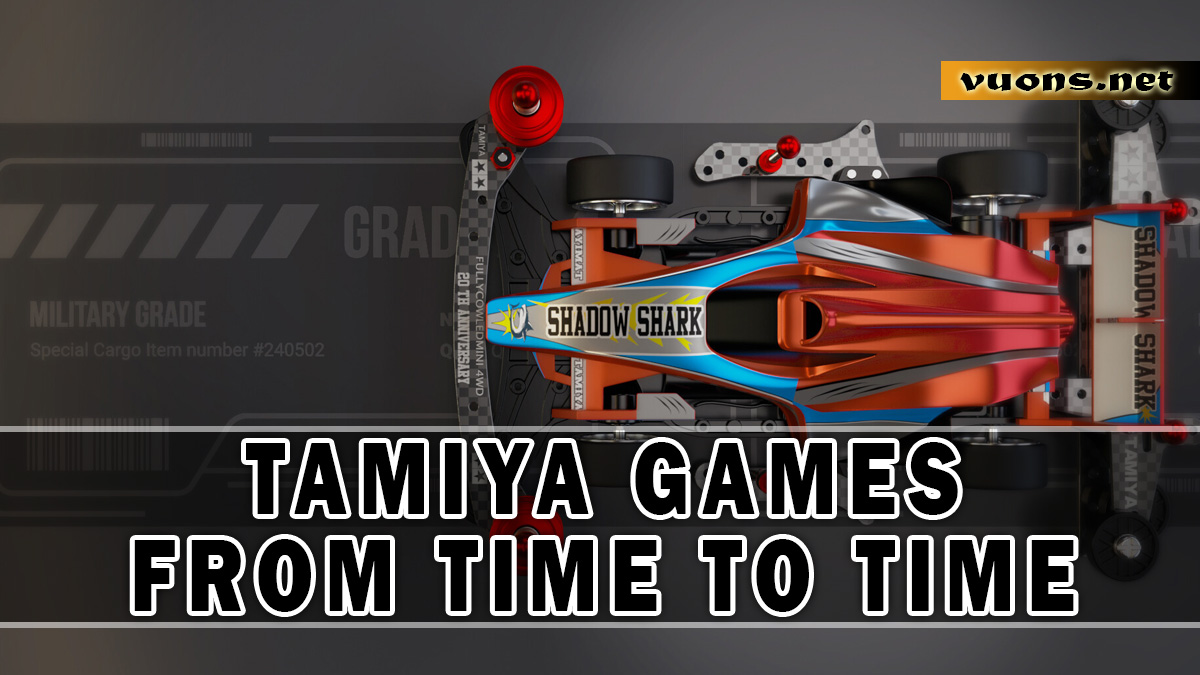HISTORY AND EVOLUTION OF TAMIYA GAMES OVER TIME
The Beginning of the Tamiya Game
The Beginning of Tamiya Games came from Japan in the 1960s. Starting as a manufacturer of plastic models and scale model kits, Tamiya soon became popular with their 4WD mini racing cars. These early models were designed with precision and high quality, reflecting the company’s dedication to detail.
Technological innovation continues to drive Tamiya’s development, with the addition of more efficient electric motors and batteries. Tamiya racing competitions began to be held, attracting the interest of children and adults. Not only is it entertainment, Tamiya also plays a role in developing mechanical skills and creativity.
Over time, Tamiya evolved with more sophisticated designs and models, following trends and technological advances. In the digital era, Tamiya is also present in the form of applications and video games, expanding its reach to the younger generation who are more familiar with technology. In Indonesia, Tamiya has a large and active community that often holds tournaments and get-togethers.
Tamiya’s popularity is also supported by media coverage and the role of social media in helping spread information and connecting fans. Apart from being a hobby, Tamiya is also a high-value collection object for many people.
Tamiya games remain relevant and continue to evolve, offering fun and challenges to fans around the world.
Tamiya Technology Development
Tamiya’s technological developments have been key in maintaining the brand’s popularity and relevance since its inception. Technological innovation was first seen with the introduction of powerful electric motors and more efficient batteries in 4WD mini racing car models. These advances allowed Tamiya cars to achieve higher speeds and performance, attracting more enthusiasts.
Design and materials have also experienced significant improvements. From initially using simple plastic materials, Tamiya now uses high quality materials that are more durable and lighter. Advanced printing and manufacturing technologies enable more precise and realistic details on each model, adding aesthetic value and functionality.
In addition, Tamiya continues to innovate with better suspension and aerodynamic systems, providing optimal performance on the race track. This technology not only improves speed, but also stability and control, making the gaming experience more fun and challenging.
In the digital era, Tamiya has also expanded into mobile applications and video games, allowing users to experience the sensation of Tamiya racing virtually. This shows Tamiya’s adaptation to technological developments and modern market needs, ensuring they remain the top choice for racing car model enthusiasts around the world.
Through continuous innovation, Tamiya has created products that appeal not only to children, but also to adult collectors and hobbyists. Tamiya’s technological developments reflect their commitment to providing high-quality products that offer continued enjoyment and challenge to all enthusiasts.
Tamiya’s Glorious Era in the World
Tamiya’s World Glory Era began in the 1980s and 1990s when their mini 4WD racing cars gained international popularity. During this time, Tamiya became a global phenomenon by holding racing competitions in various countries.
Technological advances and innovations in design make Tamiya models faster, more stable and more attractive. Competitions such as the Japan Cup and World Championship attract participants from all over the world, strengthening the Tamiya fan community. Additionally, media support and promotion through television, magazines, and advertising expanded Tamiya’s reach and popularity.
In various countries, including Indonesia, Tamiya communities and clubs are growing rapidly, holding regular tournaments and events. This glorious era was also marked by increased sales and product diversification, including more sophisticated models and various accessories.
To this day, Tamiya remains an icon in the world of mini racing car gaming, thanks to its dedication to quality and continuous innovation. Tamiya’s era of glory in the world shows how innovative products supported by a strong community can achieve global popularity and survive for a long time.
Tamiya in Indonesia
Tamiya in Indonesia has been a phenomenon since the 1990s, when the mini 4WD racing car was first introduced. Its popularity quickly spread among children and teenagers, who were lured by Tamiya’s attractive designs and racing excitement. Tournaments and competitions are often held in various major cities, attracting thousands of participants and spectators.
The Tamiya community in Indonesia is very active, with many clubs and communities regularly holding racing events and exhibitions. Tamiya has also become an important part of Indonesian pop culture, frequently appearing in the media and on television shows. Apart from being a hobby, Tamiya is also considered a way to hone mechanical skills and creativity.
Shopping centers and toy stores usually have special areas for Tamiya racing, complete with tracks and accessories. This shows how much interest and enthusiasm there is for this game. With technological developments, Tamiya in Indonesia continues to adapt, including in digital form and mobile applications, ensuring new generations remain interested.
Overall, Tamiya in Indonesia is not just a game, but also part of a culture that connects generations through fun and competition. Its continued popularity shows just how much influence and appeal Tamiya has in this country.




